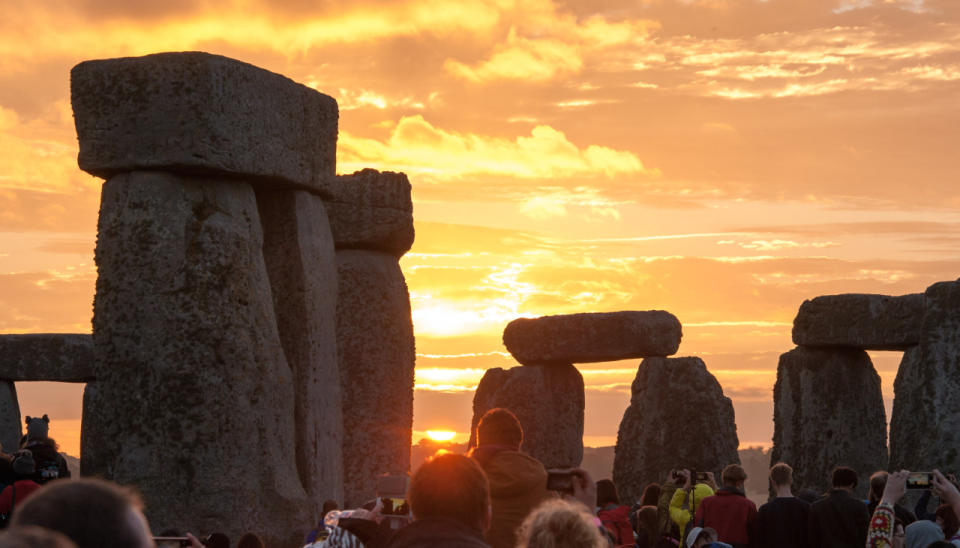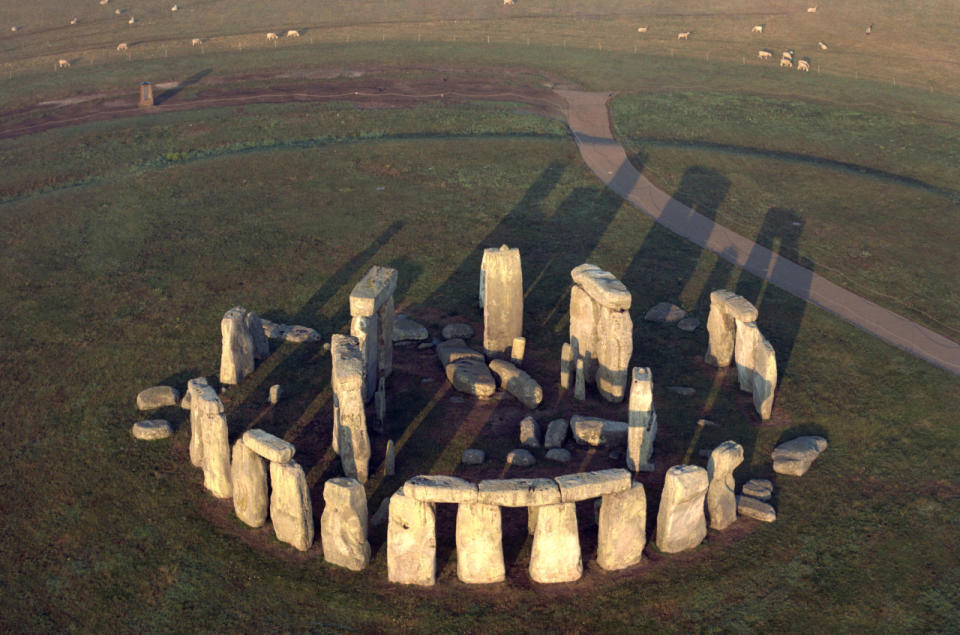10 Unusual Theories About Stonehenge

On Monday, hundreds of people gathered at Stonehenge to watch the sunrise and welcome in the longest day of the year.
The summer solstice, when there are approximately 17 hours of light, has been celebrated in various ways in different cultures since antiquity.
Today, it is mostly famously marked by New Age and Neo-pagan groups, as well as revellers, at the prehistoric monument in Wiltshire.
But despite it’s popularity, the famous ring of standing stones remains a mystery.
Here we look at some of the theories – sensible and otherwise – about the site.
It was a burial site for the rich and famous
The idea that Stonehenge is an elaborate graveyard seems to make a lot sense, and in 2013, archaeologists excavated and examined the remains of 63 bodies that had been buried there. The scientists, from the universities of Southampton, Manchester, Bournemouth, Sheffield, London, York and Durham, concluded that the first bluestones, the site’s smaller standing stones, were brought from Wales and placed as grave markers around 3,000BC.
It was a pre-historic Lourdes
Geoffrey Wainwright and Timothy Darvill, two archaeologists, have claimed that there is evidence the area was visited by pilgrims because of its healing powers (making it the equivalent of Lourdes in France). "It was the magical qualities of these stones which … transformed the monument and made it a place of pilgrimage for the sick and injured of the Neolithic world,” wrote Wainwright.
It worked as a giant instrument
In 2014, researchers from the Royal College of Art discovered Stonehenge’s central Blue Stone has musical tones when struck – meaning it could be a giant glockenspiel of sorts, and would explain why it was built in a circle. Paul Devereux, who part led the study, said: “It hasn’t been considered until now that sound might have been a factor [but] we do know such rocks were deemed very important in other parts of the ancient world.”
It was a prehistoric computer
In 1963, Gerald Hawkins, a British-born astronomer at Boston University in the US, theorised that Stonehenge was an astronomical computer of sorts, used to predict movements of sun and stars. He then expanded on the theory in his book Stonehenge Decoded which divided the scientific community. Since his landmark research, other scholars have noted how other ancient sites were used as astronomical observatories.

Stonehenge from above (Adam Woolfitt/robertharding/REX/Shutterstock)
It’s dedicated to the female body
Most of the contributions to the written history of Stonehenge have come from archeologists and astronomers, but Anthony Perks stands alone as being the only gynaecologist to have studied the site extensively. “There was a concept in Neolithic times of a great goddess or Earth Mother. Stonehenge could represent the opening by which the Earth Mother gave birth to the plants and animals on which ancient people so depended,” he said in 2003.
It was an elaborate team-building exercise
Hundreds, sometimes thousands, of people visit Stonehenge at the summer solstice. But researchers from the University College London believe that as many as 4,000 people gathered at the site each year in prehistoric times when the entire population of the country was just tens of thousands. Professor Mike Parker Pearson, who led the study, said: “What we have discovered is it’s in the building the thing that’s important. It’s not that they’re coming to worship, they’re coming to construct it.It is not so much a temple, it is a monument and it seems the big theme is unification…”
It was an ancient hunting site
In 2013, archaeologists discovered a site near to Stonehenge with evidence dating back about 5,000 years before the structure was built. It contained evidence of burning, thousands of flint tool fragments, and the bones of wild aurochs, leading David Jacques of the Open University to declare: “We may have found the cradle of Stonehenge, the reason why it is here.” That theory is that Stonehenge was a hunting site.
It was a musical hall
Was Stonehenge the o2 Arena of its day? Several researchers who work in archaeoacoustics have argued that the way it is structured would have provided excellent – if quite unusual – acoustics. "As they walk inside they would have perceived the sound environment around them had changed in some way,” researcher Bruno Fazenda, a professor at the University of Salford, told LiveScience. “They would have been stricken by it, they would say, ‘This is different.’”
It was built by aliens
Stonehenge is perhaps the world’s most famous prehistoric monument, yet some pretty big questions about it remain unanswered, such as: who built it? When did they build it? And why? While its stone circle is believed to have been constructed about 2,500 BC, over the years it has been attributed to the Saxons, Danes, Romans, Egyptians and Druids without much in the way of evidence. The question of how ancient people managed to move these enormous – at largest, 50 tonne – structures persists. One theory is that it was created by aliens – most famously put forward by Erich von Däniken in ‘Chariots of the Gods?’. He also wrote that extraterrestrials built the pyramids so make of that what you will.
It was built by giants
A medieval history text called Brut, which dates back to the 12th century, depicts a giant helping Merlin construct Stonehenge, and is the reason some people (presumably not many) believe giants helped built the enormous structure. The lack of actual evidence for the existence of giants is what makes this theory, sadly, quite unlikely.
Read more:
6 Things You Need To Delete From Your CV Right Now
8 Famous Landmarks With Amazing Secret Rooms And Passages
10 Hidden WhatsApp Features You Probably Didn’t Know About
(Credit: Simon Chapman/LNP/REX/Shutterstock)

 Yahoo News
Yahoo News 